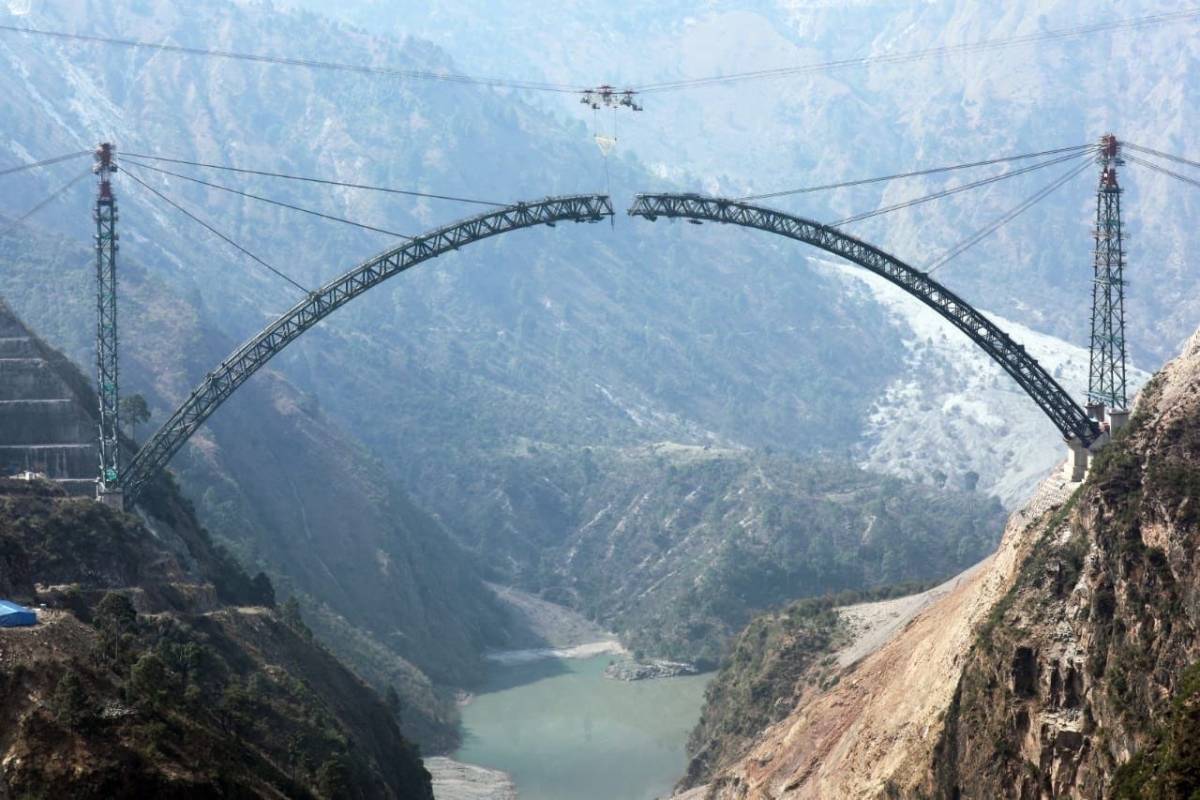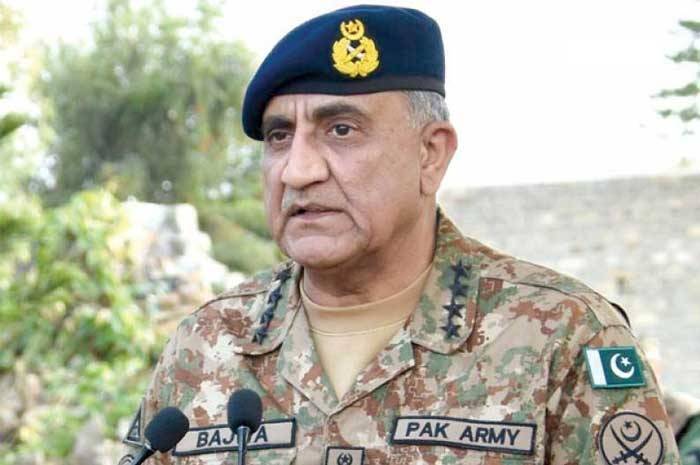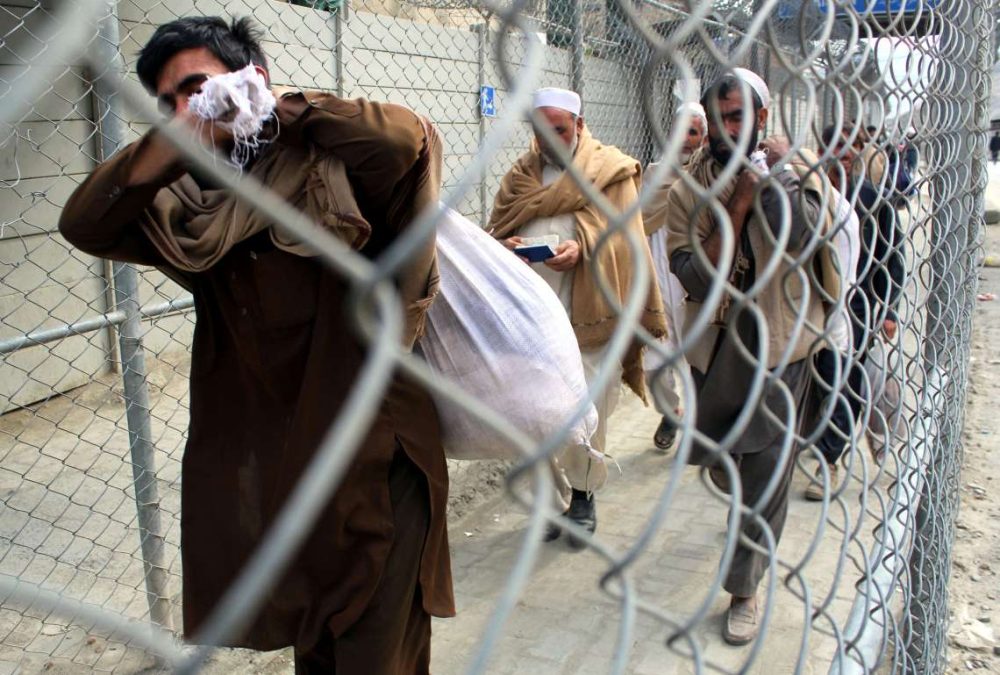Modern Indian engineering made news a few days back when the arch of the world’s highest railway bridge running 1,315 meters and standing at a height of 359m above the Chenab River bed was completed, reports Asian Lite News
The first proposal of bringing railways to Kashmir was made in 1898 by the Britishers, but their idea remained on paper.
Fast forward some 120 years, and India’s dream of fully integrating with the Valley is finally tangible with the Kashmir Railway Project ready to join the Indian Railways canvas by 2023.
The project is the highest altitude railway network in India — defying gravity on the impossible terrain of the Pir Panjal mountain range.
Making the fantasy a reality, it is the only railway line constructed in broad gauge on Indian mountains, daring to run the distance of 345 km over major earthquake-prone zones, while being exposed to extreme temperatures.

The arrangement of Kashmir railways is one of the greatest engineering challenges ever faced, only next to the China-Tibet railroad which crosses perpetually frozen ground and rises to more than 5,000m above sea level. In the case of Kashmir, the rail route owes its complexity to the dangerous rugged geography of the Himalayas.
While the Valley has an average height of 1,850m, the surrounding Pir Panjal range has an average elevation of 3,000m. The trains are fixed with a snow cutter system for clearing the snow on the track while the temperature in coaches is maintained at 20-degree Celsius during winter months.
Union Railway Minister Ashwini Vaishnaw launched the ‘Rail Kaushal Vikas Yojana’ on September 17 and said that the engineers and technicians are working in difficult conditions to achieve the nation’s dream.
The connectivity to this region is important for national security, prosperity, and socio-economic development. Many other major roadways projects are also underway in the Valley along with the railways — all operating in mission mode to link the mountainous terrains, ravines, gorges, and river basins.

Modern Indian engineering made news a few days back when the arch of the world’s highest railway bridge running 1,315 meters and standing at a height of 359m above the Chenab River bed was completed.
It will allow the railways to cover maximum ground in the area. One more monumental project is the 272 km long Udhampur-Baramulla railway line project that would connect the two places through Jammu, passing through panoramic views of quaint mountainous towns, pristine river basins, and silent deodars.
Yet another spectacular engineering marvel is the Bridge No. 39 situated between Katra and Reasi, which was completed on October 20.
The Reasi yard station is built on high, rectangular, tapered hollow piers 105m in height, with the bridge spanning about 490m — a structure made with 7,000 reinforcement steel and 6,700 million tonnes of structural steel. This is a milestone achievement on the USBRL project in Jammu and Kashmir.
The Union Minister has kept a foresighted approach in this mega-project, ensuring no obstacles concerning funding, land acquisition etc.

The Indian Railways has prepared a National Rail Plan to create a ‘Future Ready’ railway system by 2030. From the perspective of tourism, trade and commerce, and the economy in general, the people of J&K will be able to explore novel opportunities for business and employment.
The Udhampur-Baramulla-Srinagar rail line stands erected at a cost of Rs 28,000 crore. For now, the focus is on the strategic, intervening line of about 111 km between Katra and Banihal, which consists of many tunnels and escape tunnels.
Meanwhile, the target date for completion of electrification works in the Banihal-Baramulla railway section is March 2022, according to the Railways.
The world’s most advanced technologies are being used for the planning and construction of the Kashmir Railway Project. What makes it more exciting are the peculiar challenges specific to this region, for which many times new technologies had to be developed by experts in India and abroad to tackle the concerns.
The story of Kashmir Railways is sure to go down as the new chapter of the region’s glory, development and prosperity.














